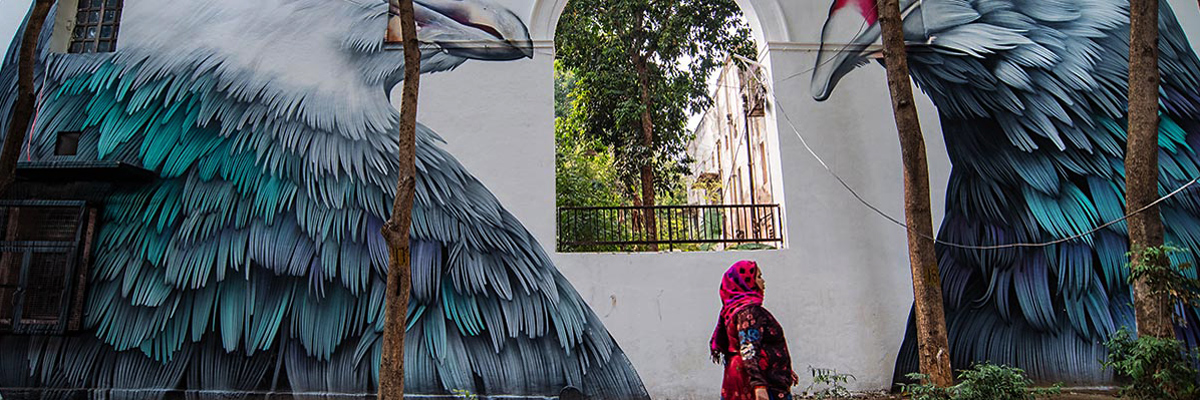St+Art Delhi continues apace with an ever-expanding roster of artists and financial/commercial/municipal partners five years after we first began writing about it, and photographer Martha Cooper brings us today some of the newest installations and shots that she recently discovered while there.
A mural program at heart, many of the artists invited here bring a decorative character to the districts of Shahpurjat, Khirki Village and Hauz Khas Village also have roots in illegal graffiti and Street Art back home, and during their youth.
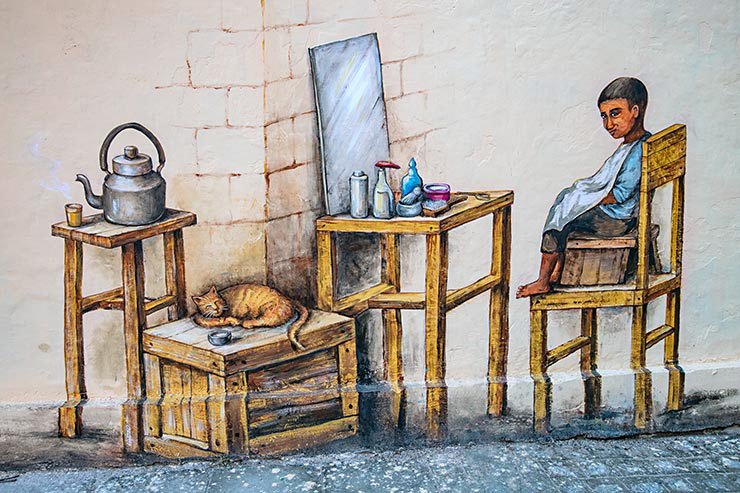
Over the years that list has included an international and local array of artists invited to paint at Lohdi Colony from all the continents – well maybe not Antarctica. Names have included ECB, Lady Aiko, local students Avinash and Kamesh, Suiko of Japan, Reko Rennie from Australia, Lek & Sowat from France, Kureshi from India, Inkbrushnme from India, Dutch artist Niels Shoe Meulman, Swiss duo Never Crew, Tofu from Germany, Mattia from Italy, Artez from Serbia, M-City from Poland, Ano from Taiwan…
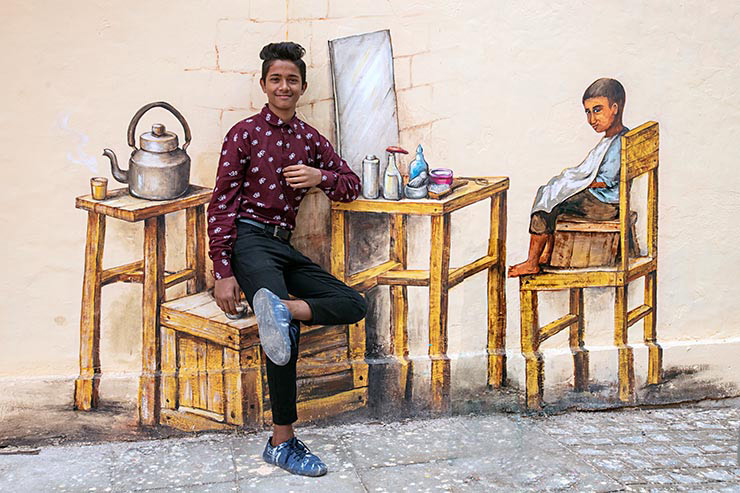
Notable here is the architectural framing convention for most of these murals- the distinctive facades of Lodhi Colony architecture that features a central archway and four windows divided by it on a semi-ornate face forward. Some of the arches begin on the ground while others have been bricked into windows. Each provides a view inside the entry or courtyard, while others are bursting out with limbs and trees that protrude through them to the street.
Originally designed by the British-born architect William Henry Medd in the late 1930s and early 1940s as part of a program to house certain populations, this unifying pattern sets the quiet neighborhood apart from others in the city.
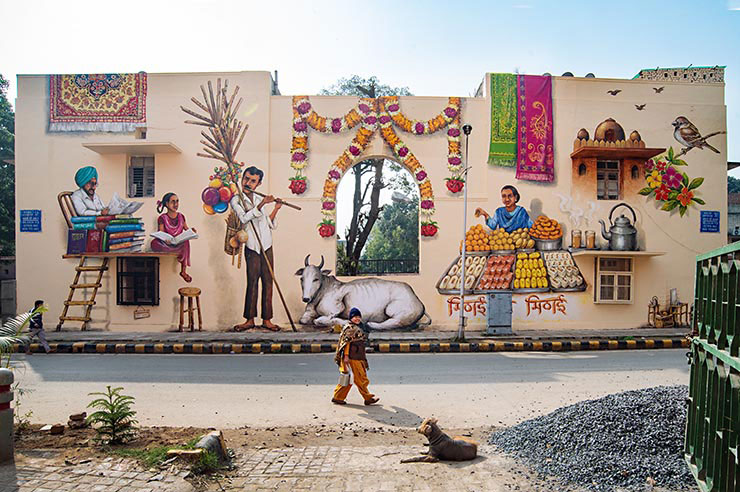
As Chief Architect to the Government of India during that period, Mr. Medd oversaw much of the design of the relatively new city as well as buildings like the Cathedral Church of the Redemption and Sacred Heart Cathedral, both of which reflect his affinity for the high arches that distinguish the period.
“It’s interesting to see how the very different artists have incorporated the arch into their murals,” says photographer Cooper. “The uniform size and shape of the walls unify the disparate collection and the arches give the whole area an exotic touch.”
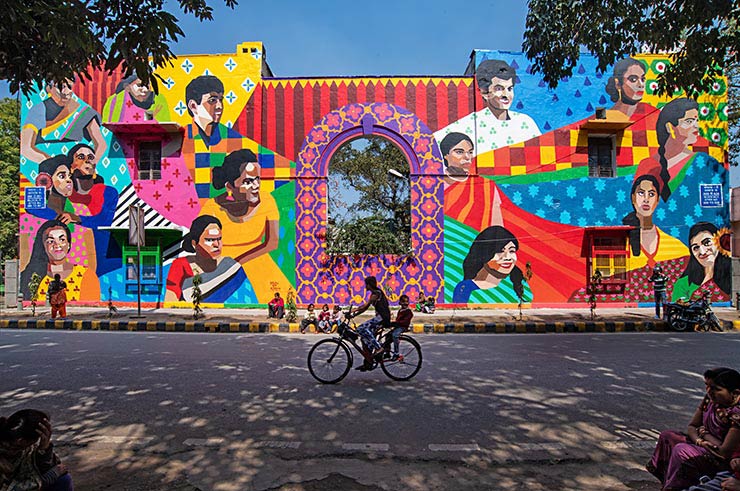
As is her practice many of these images also skillfully incorporate the foot traffic and community who live here and who are beginning to associate these figurative, abstract and folk-inspired murals into their daily lives. Asking people to pose in front of the new paintings gives them context, somehow also bringing them alive in certain cases. At other times, her timing and eagle eye capture the passerby who unknowingly creates a serendipitous counterpoint to the new work.
“It’s a quiet neighborhood compared to the rest of Delhi,” Martha says, “making it a very pleasant place for an afternoon walking tour.”
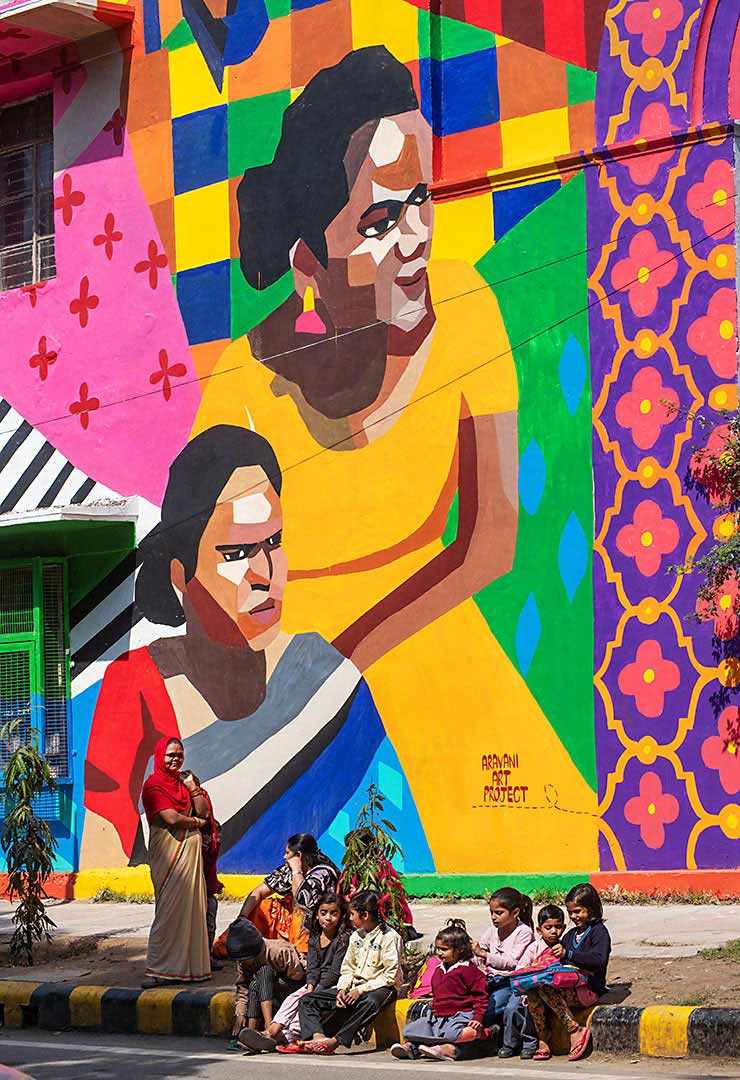
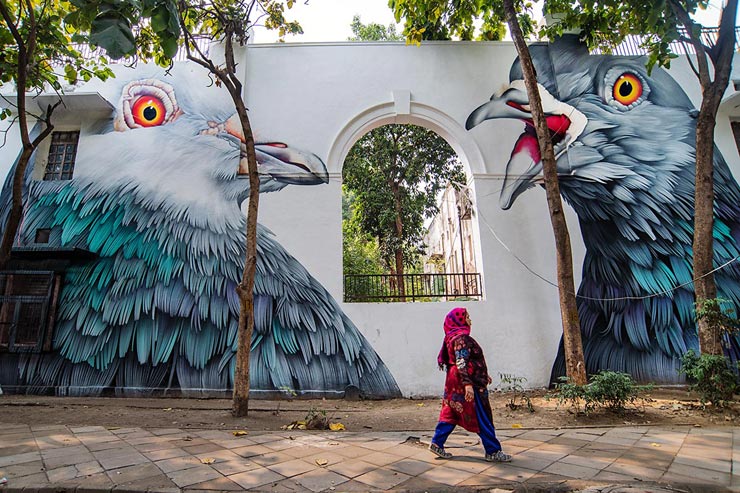
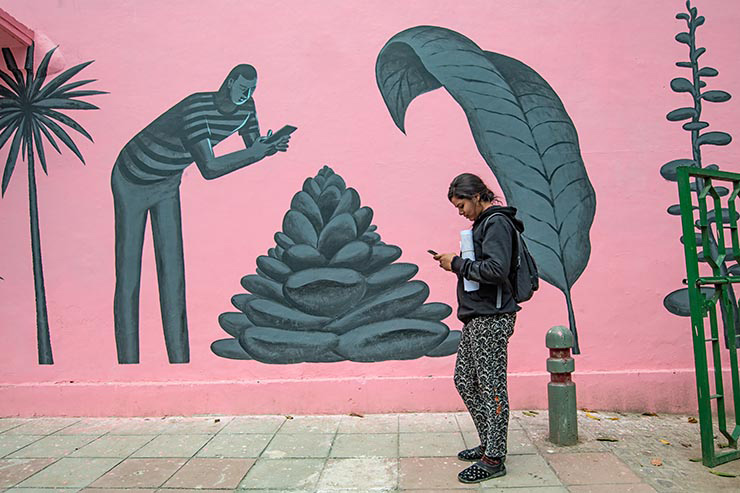
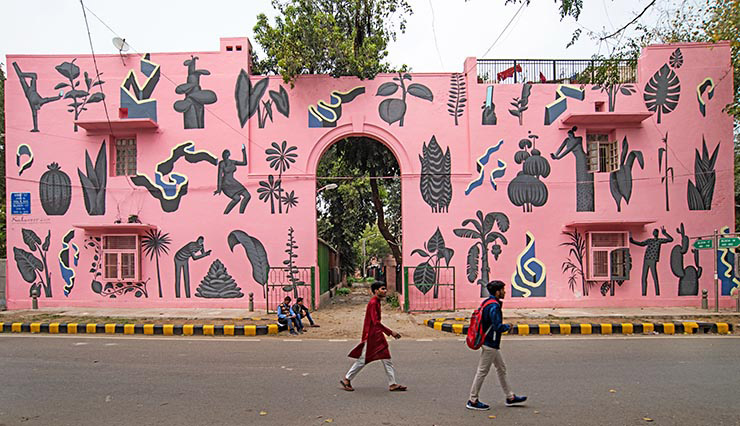

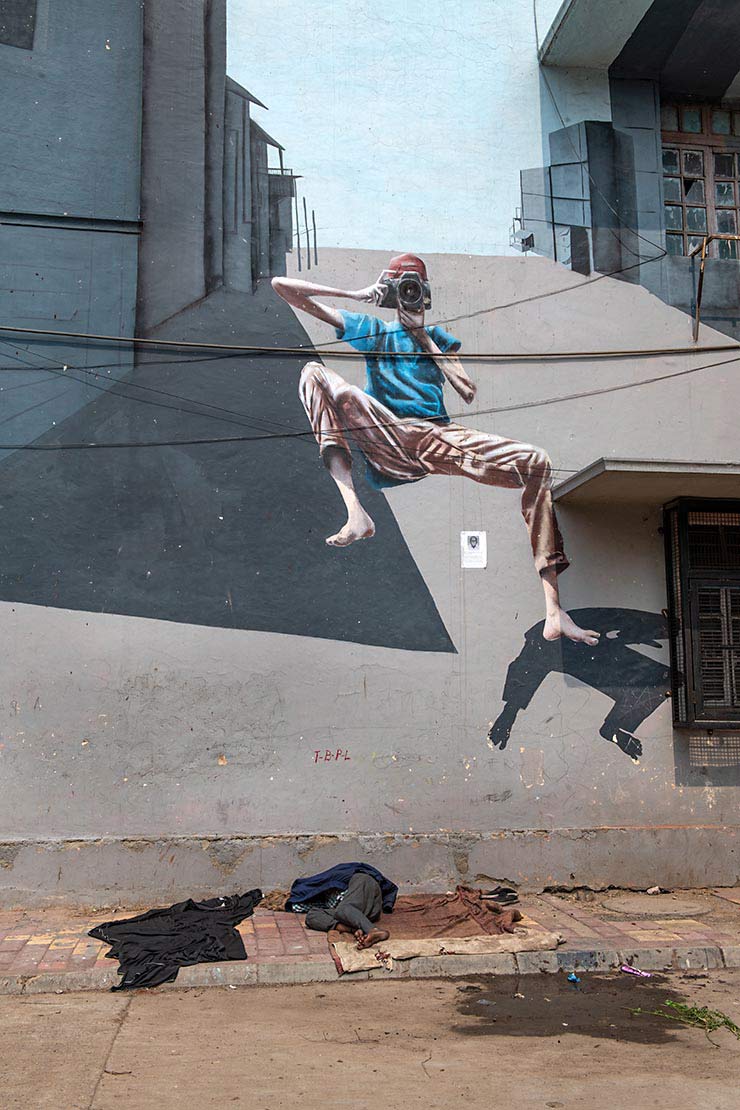
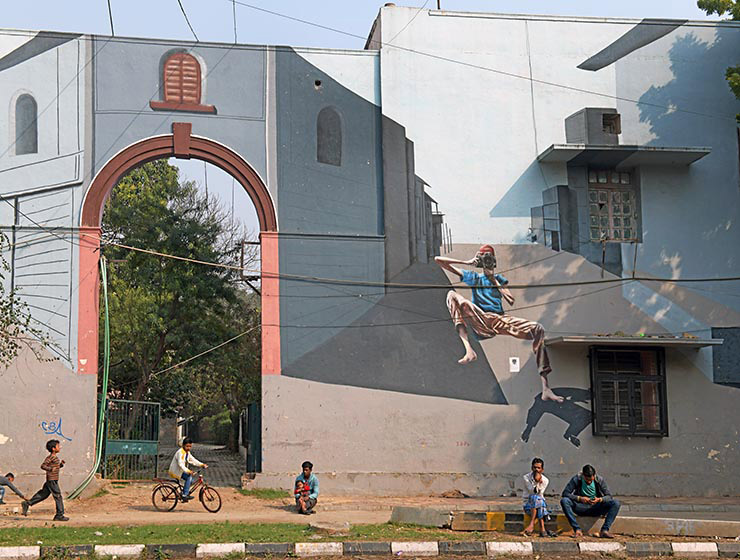
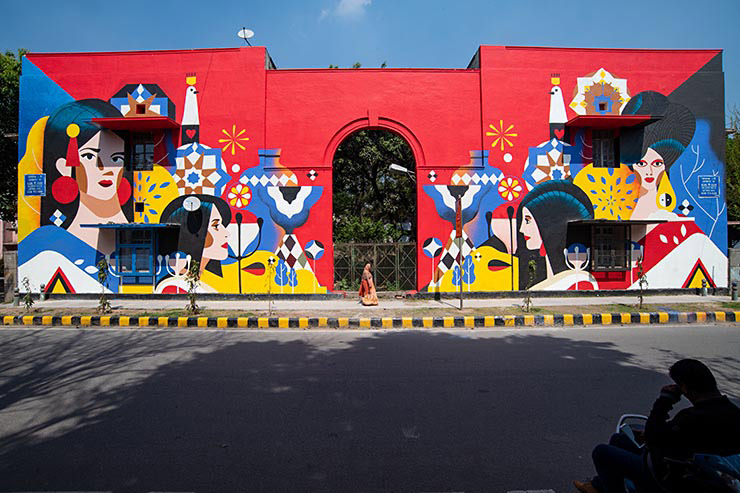
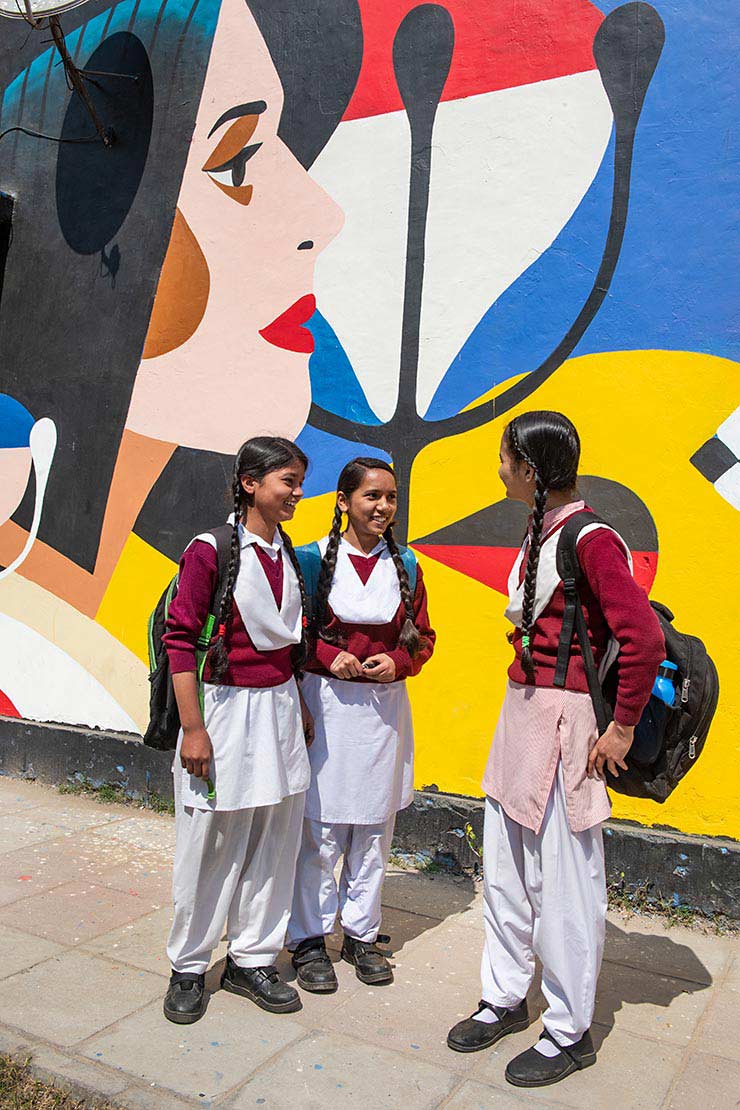
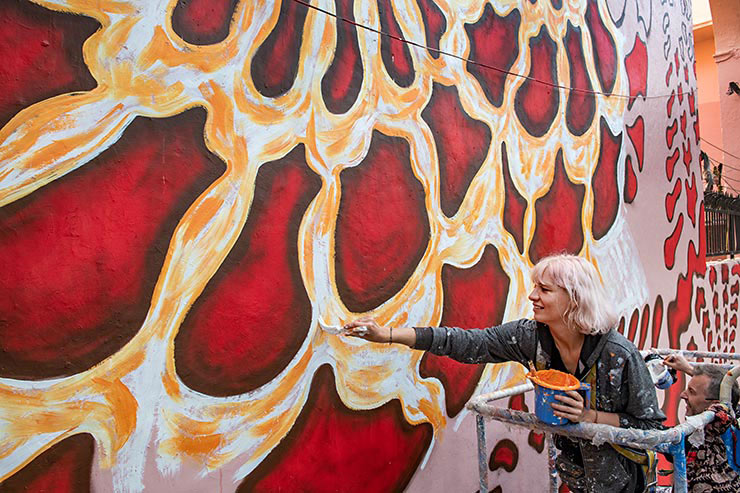
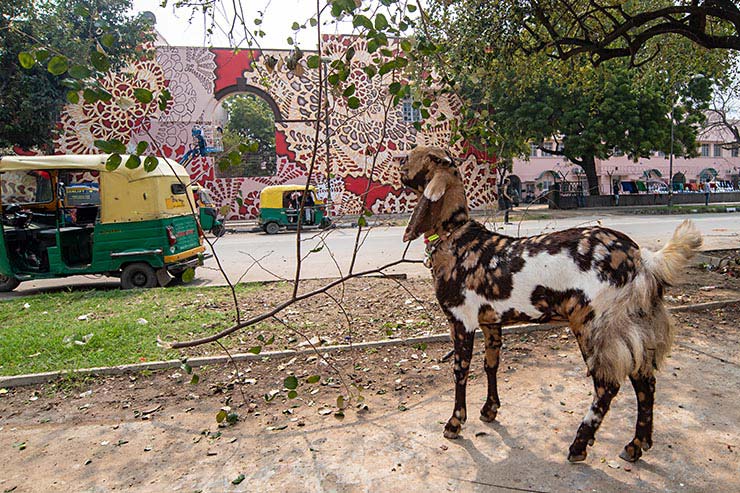
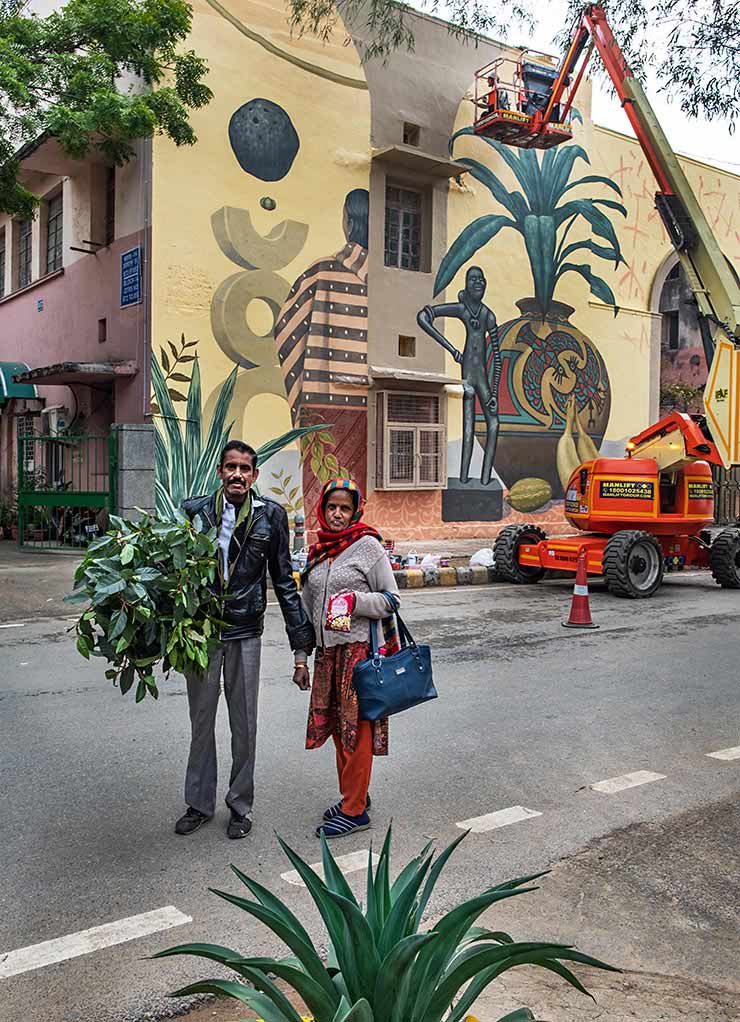
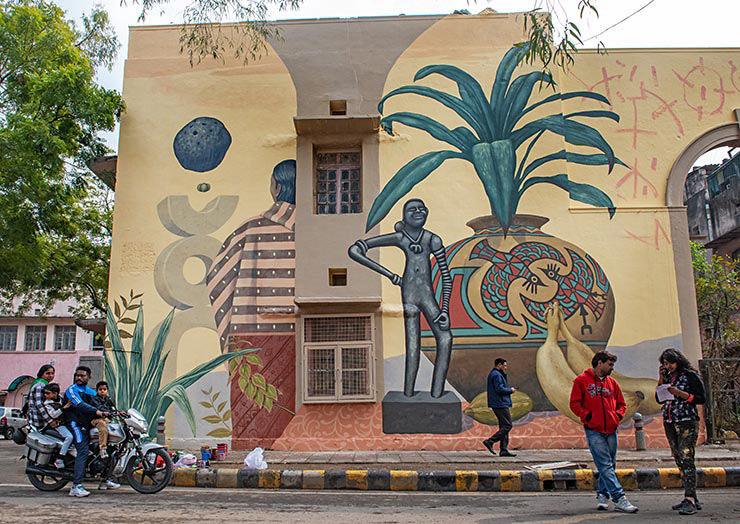
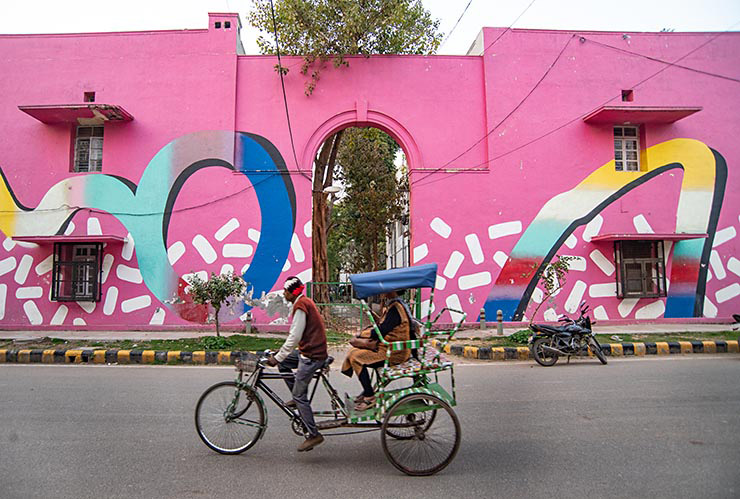
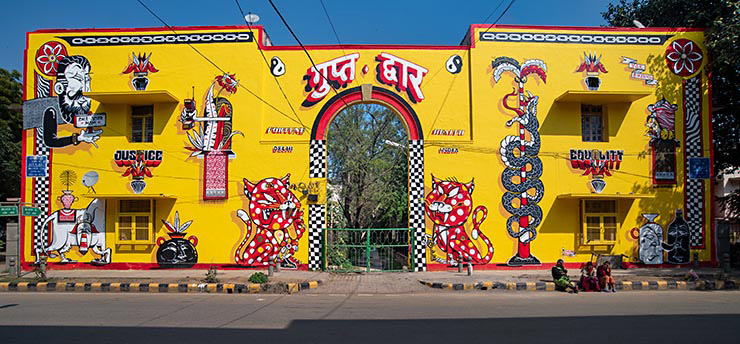
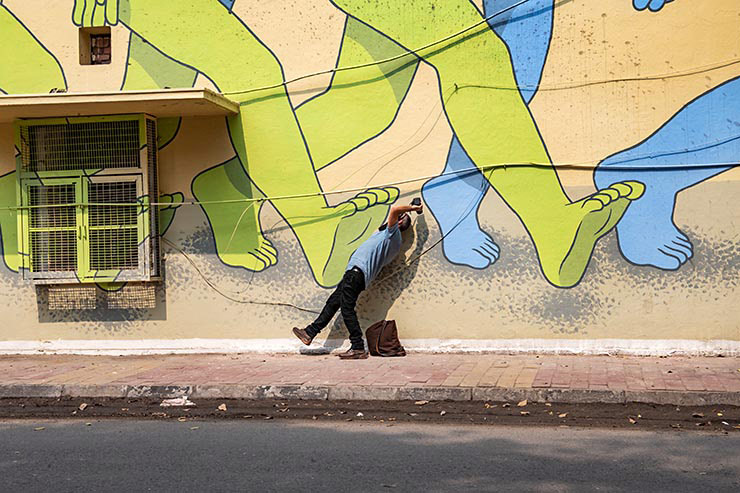
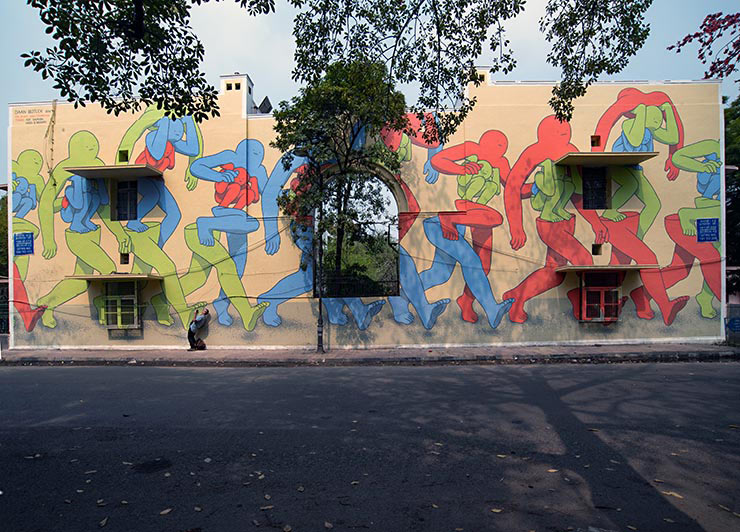
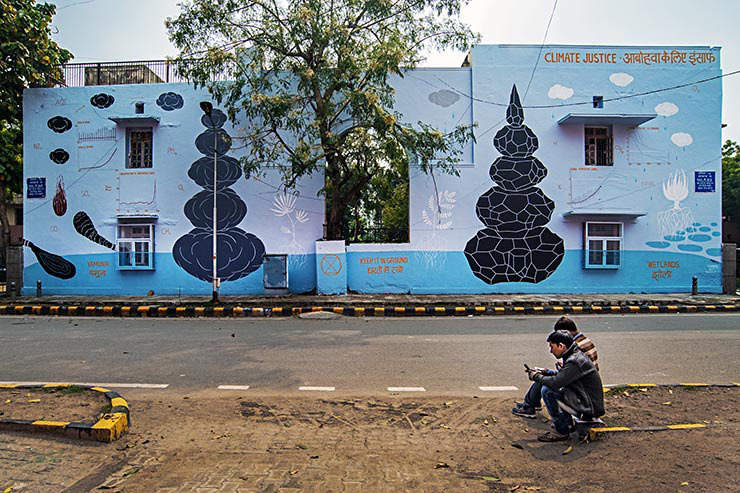
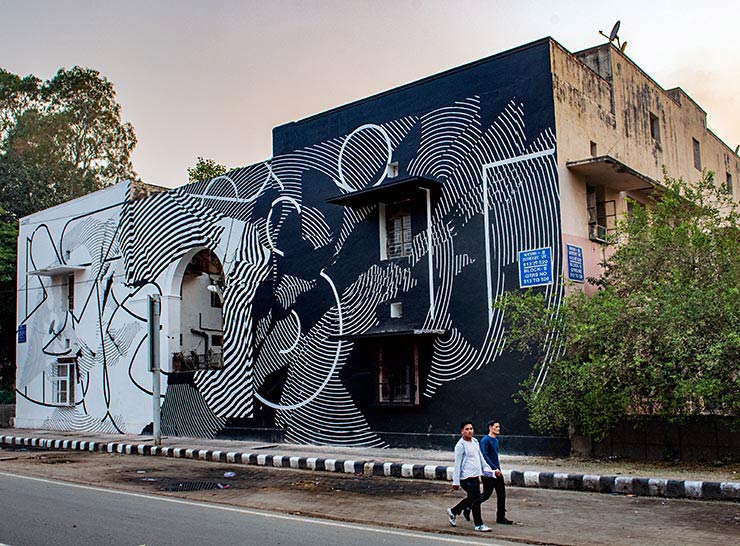
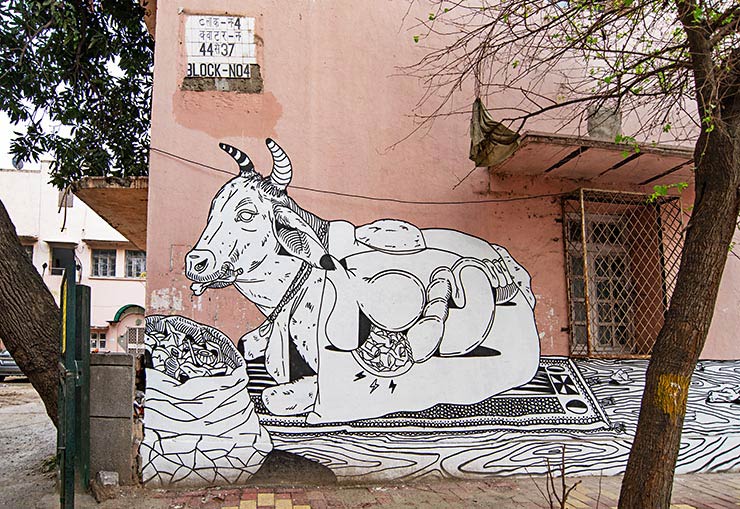
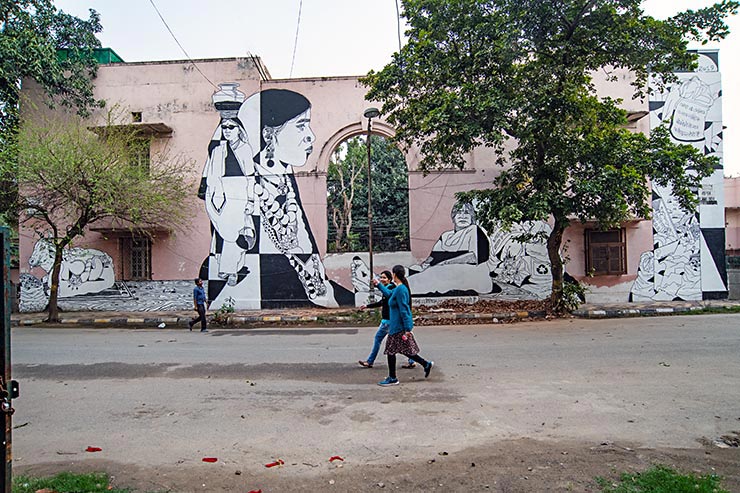
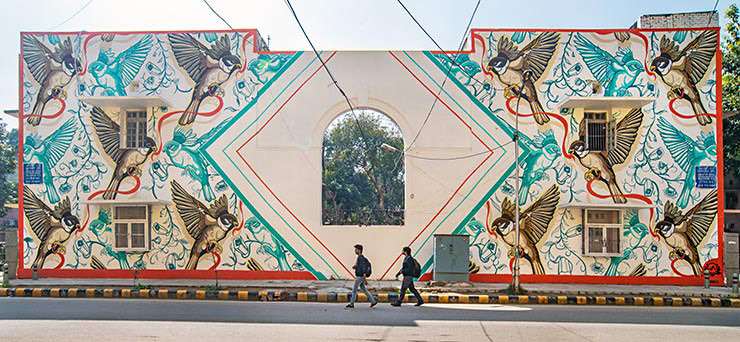
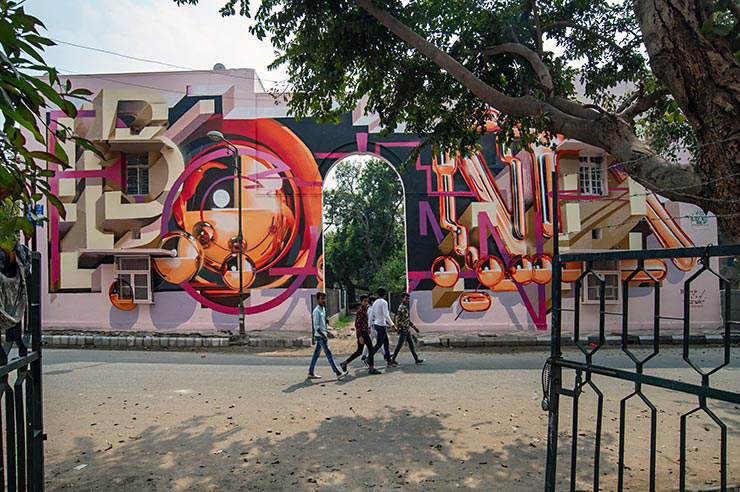
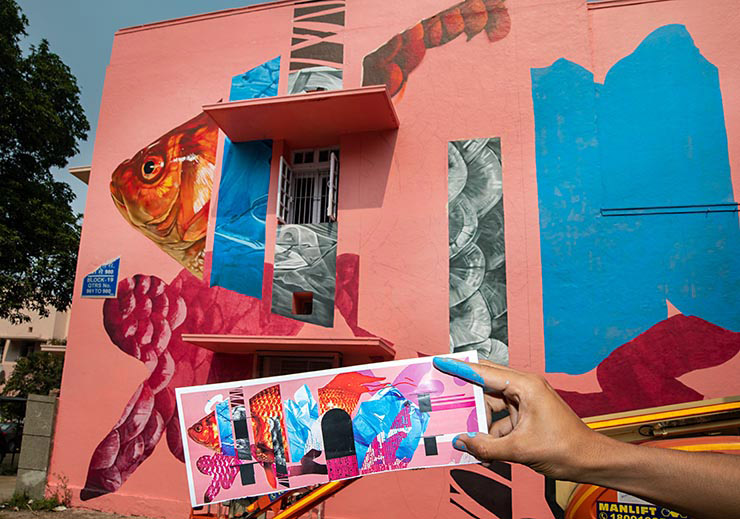
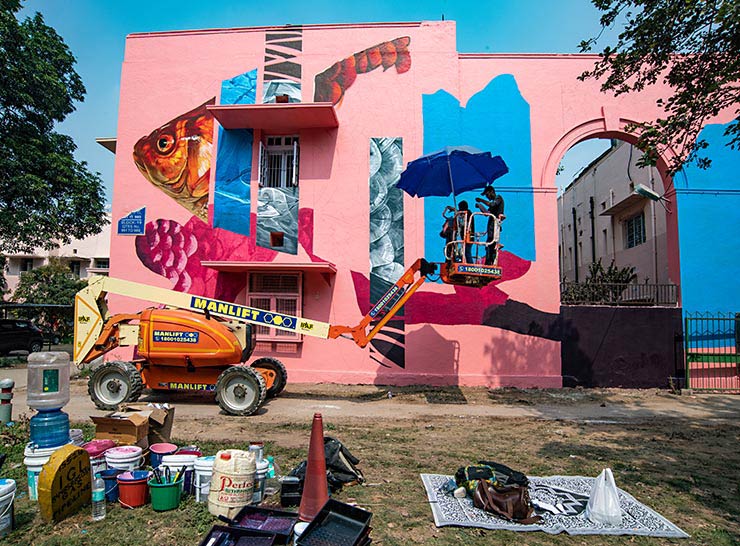
Other Articles You May Like from BSA:
Greek muralist INO just knocked out this huge wall in Athens and the results are smashing. With a theme of "Breaking Barriers of Equality", he says, "I created a little girl with a huge hammer; symb...
Hooray! Spring is here in New York again. That means daffodils and crocuses are sprouting up among the soda cans and candybar wrappers and cigarette butts in the park's gardens, and new proud or f...
What to do with 13 decommissioned factory pipes in Dnipro, Ukraine? Why not convert them into a glorious bouquet of flowers...laser flowers that is. The city of one million is located in southeas...
“I was conflicted about making the mural in France,” says Street Artist and muralist David Walker about the new sky-gazing countenance of a woman he painted there during the recent terrorist attacks. ...
f Our weekly focus on the moving image and art in the streets. And other oddities. Now screening : 1. "AfroGrafiteiras" featuring Andrea Bak2. Magda Cwik / Hotel 128 / Street Art City in Franc...
 BROOKLYN STREET ART LOVES YOU MORE EVERY DAY
BROOKLYN STREET ART LOVES YOU MORE EVERY DAY